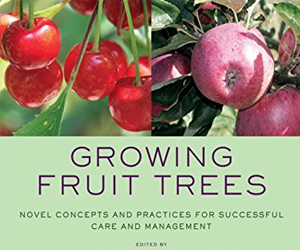Planting Large Fruit Trees, Berry Bushes, Grape Vines, And Oak Trees
Much national attention has been focused on the health and future welfare of wildlife animals and birds by wildlife management conservationists and hunters who want to preserve a valuable American resource: the population of wild animals and wild game. Increased planting of inedible crops like cotton and tobacco has reduced wildlife food supplies. Urban expansion has rapidly reduced forests where wildlife food once grew, and very efficient grain harvesting has left only a little corn or wheat in fields for wildlife food browsing.
Until recent years, the feeding of wild game animals and wildlife game birds was done by either letting the animals feed on the native plants and flora or by supplementing the food supply by planting strips of land with food plots of various annual grains each year. Some wildlife management academics suggested planting small fruit trees, berry plants, grape vines, and perennials to avoid the expensive problem of replanting annuals every year. These suggestions worked sometimes except for the fact that planting small oak trees often required 10 years or more of growing to produce the first food supply of acorns. Many small trees died the first year, because of the small root systems, and the stress of transplanting into a hostile neglected environment.
Planting large fruiting size trees for fast wildlife food sources has become very popular, because of the high rate of livability and first year fruit production, such as with large mulberry trees, Japanese persimmon trees, and blueberry plants. Planting big fruit trees of bearing size appears to be an enthusiastic way to get wildlife food faster and less expensively in the long run.
The United States government passed a law, the Pittman-Robertson Act in 1937, to protect wildlife resources that collects an excise tax of 11% of the cost to buy any firearms, guns, or ammunition. This 11% excise tax is sent to the Department of Natural Resources of each State to protect the wildlife habitat and food plots. Over two billion dollars of funding to preserve wildlife habitat has financed wildlife welfare since 1937.
Animals and birds can only live if their energy levels are met to grow, to escape predators, to reproduce, to survive long migrations, or to survive severe winter temperatures. Wildlife animals and birds must have shelter to protect them from bad weather or to hide them from predators. Dense foliage and vegetation are the most common shelter retreats, but some animals burrow in holes in trees, logs, and in the ground or in log or rock piles.
Serious competition to wildlife for food and habitat can only lead to overcrowding that weakens wildlife resistance to disease and wild predators. Wildlife cannot survive unless sufficient water, food, shelter, and space is available. Migratory animals move from one place to another in search of food, better climate, or other environmental factors. Winter food shortage is the most important limiting factor for many wildlife species. Wildlife food plots of nut trees and fruit trees are termed, “hard mast.” The fruit trees include apple, persimmon, crabapple, pear, plum, and quince; nut trees include pecan, hickory, chinquapin, walnut, oak, and beech. Wildlife browsing for food is termed “soft mast,” include fruit and berry food from dogwood, viburnum, mulberry trees, elderberry, blueberry plants, muscadine and scuppernong grape vines, raspberry bushes, and blackberry bushes. To establish deer food plots, wildlife shrubs, trees, and vines are best planted along fence lines on the dense edge of woods, bushy pond edges, or near plots of thick grass.
Burning off pine forests helps to provide high-quality forage and cover protection for deer herd management. Native plants will regrow to establish natural food plots for wildlife nourishment and health. Pine trees, hardwood trees such as beech and oak trees provide excellent nest sites. Plants, vines, bushes, and shrubs offer natural feeding plots for birds and wildlife that browse and eat the foliage, bark, shoots, new buds, leaves, twigs, fruit, grapes, seed, acorns, flowers, and berries.
Hunting plantation wildlife food managers plant and grow a combination of species to supply food plots for wildlife all year rather than only during the hunting season. Wildlife food plots are planted and grown in strips of annual grains such as corn, soybeans, wheat, alfalfa, sunflowers, clover sorghum, buckwheat, millet, and annual rye.
Corn seed is planted in food plots to attract deer, turkey, squirrel, raccoon, pheasant, and quail. Soybeans are game food for turkey, deer, pheasant, and quail. Wheat will attract Canada geese, doves, and turkey. Alfalfa attracts only deer; and sorghum plants offer limited shelter and food for deer, pheasant, quail, and duck. Sunflower seed are good food plots for deer, dove, goldfinch, and songbirds. Clover attracts only deer. Buckwheat grain is good game food for duck, turkey, waterfowl, pheasant, quail, and deer. Millet is an attractive food plot grain for waterfowl and dove. Annual rye is an excellent food plot grain for deer, Canada geese, turkey, dove, and rabbit. These wildlife food plots are best established near pine forests, pond edges, or near river bottom land where hardwood shade trees such as oak and beech nut trees grow.
These annual grain food plots are considered short term food sources for game birds, because the grain does not return to grow next year, and the process can be expensive and challenging to wildlife management farms and plantations. Some management for food plot growers prefer to plant seed of perennials, but often these efforts are complicated and only last a few years. Other management for establishing food plots prefer to plant small immature trees of fruit trees, grape vines, shrubs and oak (acorn) trees of various sizes, but often fruiting is delayed for years unless larger mature trees are planted.
Many managers of food plots plant tiny oak trees or shrubs, but most oak trees require ten or more years to produce an acorn, even though more expensive, larger nursery grown trees produce fruit and acorns fast. Large crabapple, quince, mulberry, persimmon trees or blueberry bushes and muscadine grapevines will produce food for wild game animals and game birds after the first year, but small trees have small roots and tend to require many years for wildlife feeding purposes, and most small trees die the first year.
Berry bushes such as blueberry, blackberry and raspberry produce food early, and the thorny blackberry and raspberry bushes offer shelter and protection to game birds such as quail and pheasant. Chicasaw plum trees are a native plant to America and offer food quickly for wildlife and birds in the Spring, along with mulberry tree berries that ripen during turkey season. Late fall production of wildlife food is very desirable when most hunting seasons begin. Nut trees such as hickory, walnut and pecan attract squirrels and game birds. Chinquapin nuts attract animals and game birds.
Wild game such as deer and bear can’t resist the aroma of ripening fruit in the fall, such as persimmon, apple, crabapple, pear and quince. Wildlife species have a sense of smell much more intense than humans, and some unethical hunters use picked apple or other fruit to spread the fruit scent on the ground near a deer stand, but this is illegal, just like baiting a dove field with cracked corn. It is advisable to plant and grow trees for this purpose, because it will attract game and wildlife for legal hunting or viewing. Try planting mature trees, vines and bushes for wildlife feeding that requires no expense of yearly replanting or long waiting to produce a wildlife food source.





